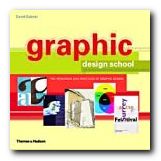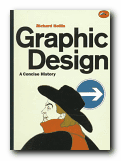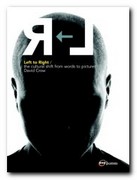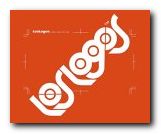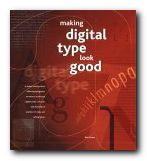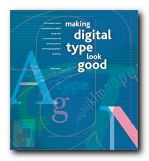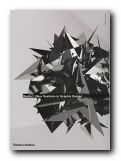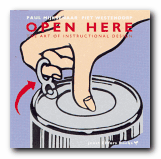contemporary world graphic design and designers
This is another block-busting visual compendium from Taschen publishing regulars Charlotte and Peter Fiell which maps out the very latest trends in contemporary graphic design. The commentary is in English, German, and French. Each artist gets a full credit with contact details, plus a list of recent exhibitions, awards, and clients. They are given just three or four pages to demonstrate their work. First a cryptic statement opposite a full page spread; then there’s a short biography, a list of recent exhibitions, and a list of clients.
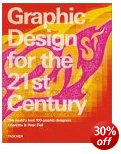 The importance of these details is that you can follow up those designers who interest you most, check out their web sites, and track down further examples of their work. And it’s amazing, given these constraints, how so many of them come up with work which is visually arresting. Like most of these giant compendiums, the content is ‘mixed’, but I have to say that the longer I pored over these pictures, the richer the work seemed.
The importance of these details is that you can follow up those designers who interest you most, check out their web sites, and track down further examples of their work. And it’s amazing, given these constraints, how so many of them come up with work which is visually arresting. Like most of these giant compendiums, the content is ‘mixed’, but I have to say that the longer I pored over these pictures, the richer the work seemed.
Work which is clearly experimental and even anti-commercial is given just as much space as adverts for Nike. There are entries for Stefan Sagmeister, Peter Saville, and other modern design studios such as Ames Brothers, the Pentagram Group, and Research Studios (all of whom have great web sites too).
The collection comes with an introductory essay by the editors which looks over the developments of the last hundred years – and the examples they have chosen come from all over the world: UK, US, Japan, France, Norway, Holland. This is a huge, value-packed compendium of contemporary graphic design, from professionals at the sharp end of what is happening right now.
It’s also a visually rich collection which is doing its best to look ahead to what might happen next. Like most of Taschen’s other publications it’s well designed, well printed and produced, and amazingly good value.
© Roy Johnson 2000
Charlotte and Peter Fiell, Graphic Design for the 21st Century, Cologne: Taschen, pp.638, ISBN: 3822816051
More on design
More on media
More on web design
